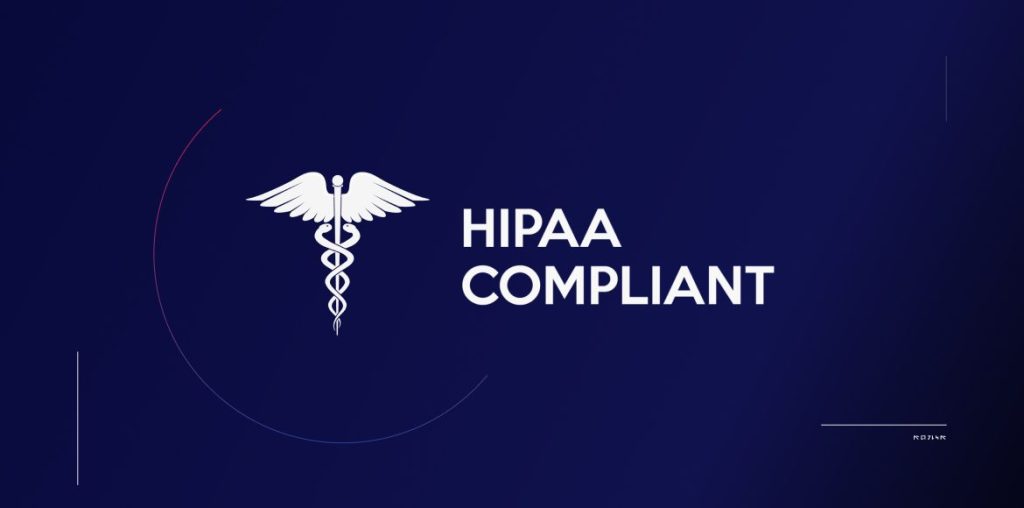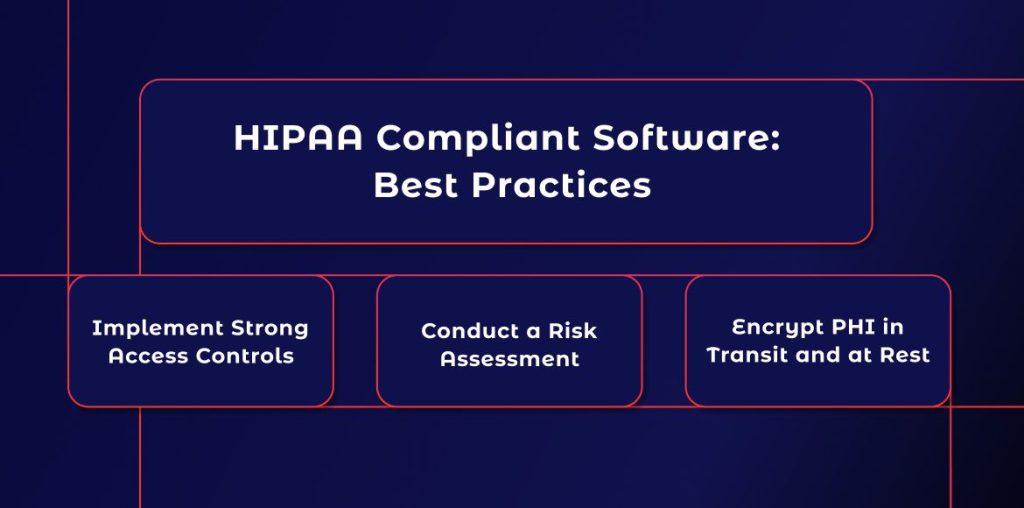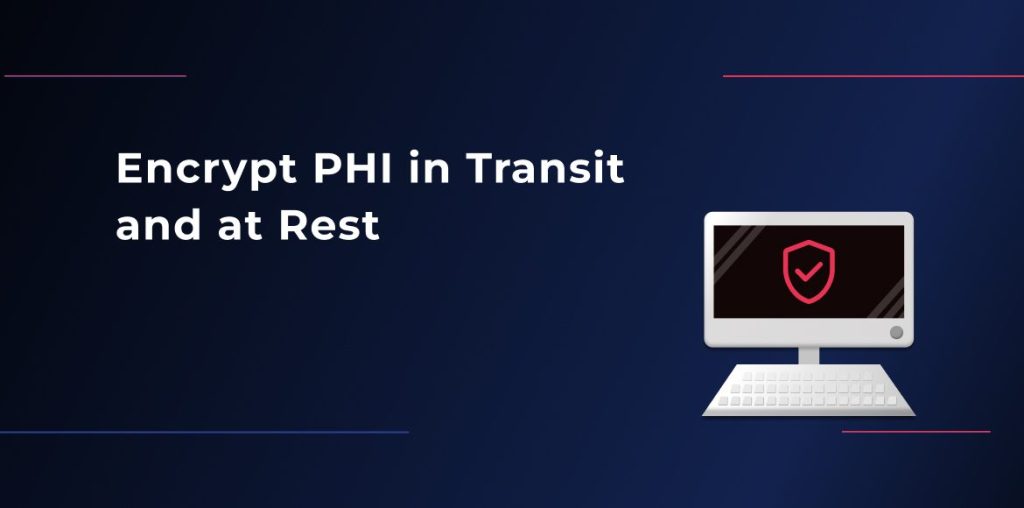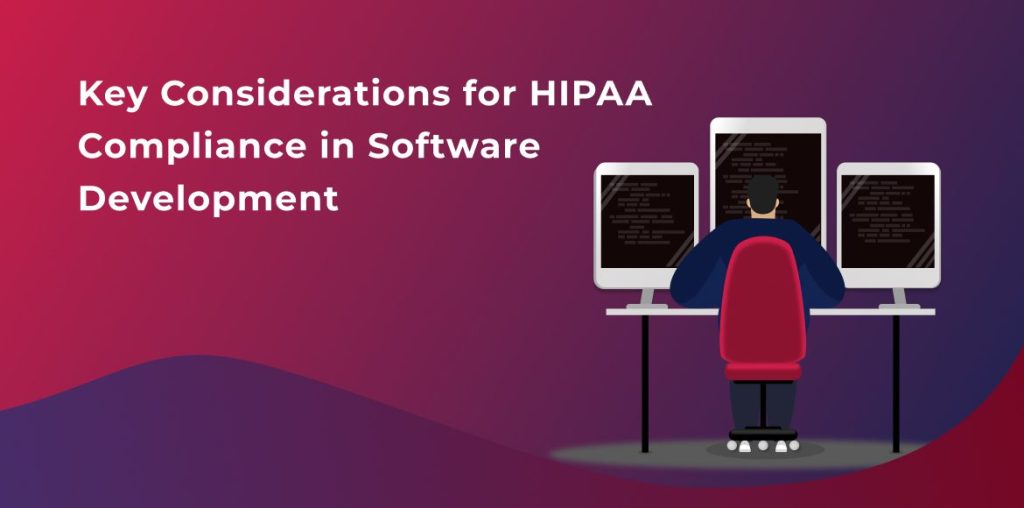How to build HIPAA compliant software?

What is HIPAA?
HIPAA, or the Health Insurance Portability and Accountability Act, is a US federal law that was enacted in 1996 to protect the privacy and security of patients' personal and health information. The law applies to healthcare providers, health plans, and other entities that handle and store patient health information, as well as to the software developers who create the applications that manage and process this information.
HIPAA sets national standards for the privacy and security of protected health information (PHI) and gives patients certain rights over their own health information. The law establishes rules for how PHI must be collected, used, and disclosed, as well as requirements for notifying patients in the event of a data breach. HIPAA is enforced by the US Department of Health and Human Services (HHS) Office for Civil Rights (OCR), which has the authority to impose significant fines and penalties on organizations that violate HIPAA rules.
For software developers, complying with HIPAA requirements is critical to protecting the privacy and security of patient information, avoiding potential legal penalties, and building trust with healthcare providers and patients. In the following sections, we will explore the key HIPAA compliance requirements for software developers and provide best practices for building HIPAA-compliant software.
HIPAA Compliance Requirements
To build HIPAA compliant software, developers need to be aware of and comply with several key requirements outlined in the HIPAA Privacy Rule and Security Rule. These requirements are designed to ensure the confidentiality, integrity, and availability of protected health information (PHI) and to prevent unauthorized access, use, or disclosure of PHI.
The Privacy Rule
The HIPAA Privacy Rule outlines national standards for protecting the privacy of PHI. Under the Privacy Rule, covered entities must obtain patients' written authorization before using or disclosing their PHI, except in certain situations such as treatment, payment, or healthcare operations. Covered entities must also provide patients with a Notice of Privacy Practices that explains their rights to access, control, and protect their PHI.
The Security Rule
The HIPAA Security Rule establishes national standards for protecting electronic PHI (ePHI). Under the Security Rule, covered entities and their business associates must implement administrative, physical, and technical safeguards to ensure the confidentiality, integrity, and availability of ePHI. These safeguards include measures such as encryption, access controls, and audit logging. Covered entities and business associates must also conduct regular risk assessments to identify and address potential vulnerabilities in their systems and processes.
Other HIPAA Requirements
In addition to the Privacy and Security Rules, HIPAA also requires covered entities and business associates to:
- Sign a Business Associate Agreement (BAA) with any third-party vendor or contractor that handles PHI on their behalf
- Provide training to employees on HIPAA compliance and security awareness
- Designate a Privacy Officer and a Security Officer to oversee compliance efforts
- Report data breaches to affected patients and the HHS OCR
By understanding and complying with these HIPAA requirements, software developers can help ensure the confidentiality and security of patients' PHI and avoid potential fines and legal penalties. In the following sections, we'll discuss best practices for building HIPAA-compliant software that meets these requirements.

HIPAA Compliant Software: Best Practices
Building HIPAA-compliant software development can be a complex process, but following best practices can help ensure the confidentiality and security of patients' PHI. Here are some key considerations for software developers:
Conduct a Risk Assessment
Before building any software that handles PHI, developers must conduct a risk assessment to identify potential vulnerabilities in the system. This assessment should include an inventory of all PHI that will be collected, used, or stored, as well as an evaluation of the system's security controls, network architecture, and access controls. By identifying potential risks early in the development process, developers can design and implement appropriate security measures to protect against potential threats.
Implement Strong Access Controls
Access controls are critical to protecting PHI from unauthorized access. Developers should implement strong access controls, including user authentication and authorization, and ensure that users are only granted access to the information they need to perform their job duties. Access controls should also include measures to prevent unauthorized access to PHI, such as automatic logoff and password policies.
Encrypt PHI in Transit and at Rest
Encryption is an effective way to protect PHI from unauthorized access during transmission and storage. Developers should use industry-standard encryption protocols to protect data in transit and at rest, including data stored on mobile devices, laptops, and other portable media. Additionally, developers should ensure that encryption keys are managed securely and that all encrypted data is adequately protected.

Establish Policies and Procedures
Developers should establish policies and procedures that reflect HIPAA software requirements and best practices for security and privacy. These policies should include procedures for managing PHI, responding to security incidents, and ensuring that employees are trained on HIPAA compliance and security awareness. Developers should also ensure that all policies and procedures are documented and easily accessible to employees.
Sign Business Associate Agreements
Developers should sign Business Associate Agreements (BAAs) with any covered entities or business associates that they work with. These agreements should clearly define the roles and responsibilities of each party and should outline how PHI will be handled, used, and disclosed.
Test and Monitor the System Regularly
Developers should test and monitor the system regularly to ensure that it meets HIPAA requirements and remains secure over time. This testing should include vulnerability scans, penetration testing, and other security assessments to identify potential vulnerabilities in the system. Additionally, developers should monitor the system for security incidents and should have a response plan in place to address any incidents that occur.
By following these best practices, software developers can build HIPAA-compliant software that protects the privacy and security of patients' PHI. Developers should also work closely with covered entities and business associates to ensure that all HIPAA requirements are met and that the system is fully compliant.
Want to develop a custom software solution?
Key Considerations for HIPAA Compliance in Software Development
Developing HIPAA-compliant software requires careful planning and attention to detail. Here are some key considerations to keep in mind when developing software that handles PHI:

Design for Privacy and Security
Developers should design software with privacy and security in mind. This means building security and privacy features into the system from the ground up, rather than adding them as an afterthought. Software design should include strong authentication and access controls, encryption of PHI, logging and auditing capabilities, and other security features to protect against unauthorized access and disclosure.
Ensure Data Quality
HIPAA requires that PHI be accurate, complete, and up-to-date. Developers should ensure that the software collects and stores accurate and complete data, and that the system includes features for correcting and updating data as needed. Additionally, developers should implement processes for verifying the accuracy of data collected from external sources, such as health information exchanges.
Maintain Data Integrity
HIPAA requires that PHI be protected against unauthorized alteration or destruction. Developers should implement measures to ensure the integrity of PHI, such as using checksums or other methods to detect data tampering. Additionally, developers should implement processes for verifying the integrity of data received from external sources, such as health information exchanges.
Plan for Disaster Recovery
HIPAA requires that covered entities and business associates have a disaster recovery plan in place to ensure the availability and integrity of PHI in the event of a system failure or natural disaster. Developers should design software with disaster recovery in mind, including features for backing up and restoring data, and processes for restoring the system in the event of a disaster.
Document the Development Process
Developers should document the development process to demonstrate compliance with HIPAA requirements. This documentation should include design specifications, test plans, security and privacy assessments, and other documentation that demonstrates compliance with HIPAA requirements.
Provide Training and Support
Developers should provide training and support to covered entities and business associates on the proper use and maintenance of the software. This training should include guidance on how to use the software in a HIPAA-compliant manner, as well as instructions for reporting and responding to security incidents.
By keeping these considerations in mind, developers can ensure that software is built with HIPAA compliance in mind and can help covered entities and business associates meet their HIPAA obligations.

Conclusion
In conclusion, developing HIPAA-compliant software requires a thorough understanding of the legal requirements and best practices for handling PHI. It's important to approach the development process with privacy and security in mind, and to implement features that protect against unauthorized access, ensure data quality and integrity, and provide for disaster recovery.
Additionally, developers should document the development process and provide training and support to covered entities and business associates to ensure that the software is used in a compliant manner.
By following these best practices, developers can help covered entities and business associates meet their HIPAA obligations and protect the privacy and security of PHI.


1 thoughts on "How to build HIPAA compliant software?"